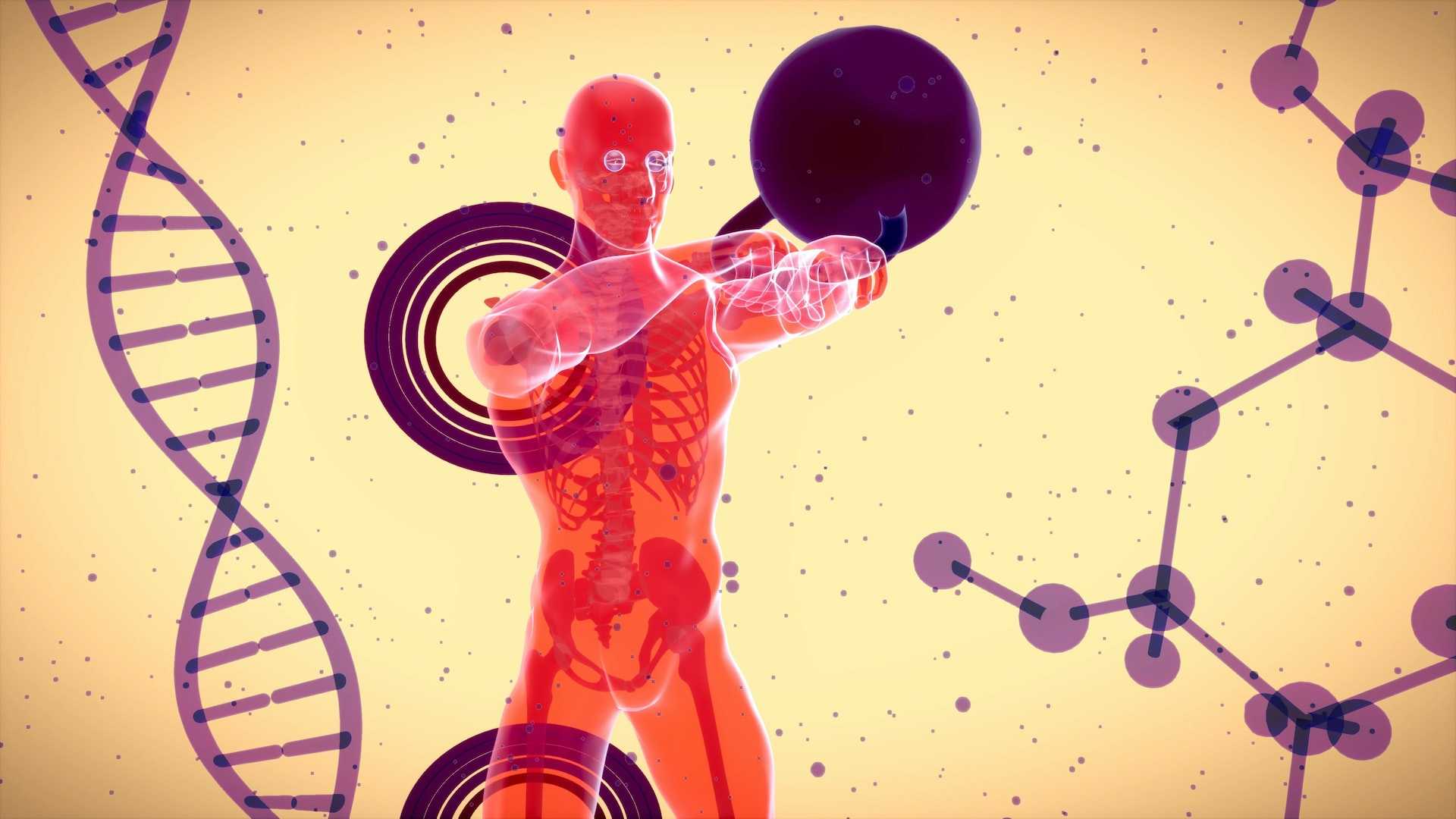How to Calculate Basal Metabolic Rate (BMR)

Photo by: Julien Tromeur
Hello and welcome!
Today, you will learn how to calculate your Basal Metabolic Rate (BMR).
You need to know your BMR to accurately calculate how many calories you should plan to eat to lose fat or gain muscle.
In the last article, you learned How to Measure Body Fat Percentage using the U.S. Navy Circumference method.
Knowing your body fat percentage is important because it lets you quickly determine your Basal Metabolic Rate (BMR).
So if you haven't figured out your body fat percentage yet - feel free to take care of that now and return to this article afterward.
Ready? Let's discuss BMR for a minute. Then we'll walk through some simple calculations.
What is Basal Metabolic Rate (BMR)?
BMR is essentially your metabolism.
It’s the number of calories your body burns at rest without any activity.
You can think of BMR as the energy required to keep things running smoothly inside your body.
Your body’s cells, tissues, and organs require energy to perform the most basic functions that keep you alive - like breathing, circulating blood, and regulating body temperature.
The calories you consume provide the energy needed to keep the body functioning correctly.
BMR is responsible for the most significant expenditure of calories in your daily life.
About 65% of the calories you consume are designated for BMR alone.
The remaining calories burned come from your normal day-to-day activities, food digestion, and exercise.
The organs that require the most calories/energy to maintain functionality include your brain, nervous system, and liver. You certainly wouldn’t want to deprive those life-giving powerhouses of the energy they need.
This explains why cutting calories to extremely low levels makes you feel awful and is unsustainable.
Without sufficient calorie intake, the body starves. When it starves, it begins shutting down every possible process to stay alive.
People that slash calories below their Basal Metabolic Rate are effectively starving. This is especially true if the deprivation lasts any significant amount of time.
Think of it this way. Your body is like a plant. What happens to plants when they don’t receive adequate food, water, and sunlight? They start to wither. And if there is no improvement to their environment - they die.
Therefore, it's essential to understand what your BMR is so you can make sure your calorie intake is sufficient.
What factors influence a person’s BMR?
Several things can influence a person’s BMR. Let’s quickly examine a few impacting factors.
Genetics
Many of your body’s chemical processes that create and use energy are genetic - but that doesn’t mean your metabolism can't be influenced.
It’s unfair to yourself to blame excess weight on a “slow metabolism.”
It's also unfair to undermine someone by reducing their hard work to a “fast metabolism.”
Yes, some people are born with a higher BMR - but every human controls their destiny.
Anyone can improve their overall fitness. Always do the best with what you’ve got!
Environment
Let’s pretend that you cloned yourself. Would you and your clone have the same BMR? You would think so.
But what if we ship one of “you” off to live in the Yukon Territory?
The version of you living in one of the coldest climates on earth would develop a higher BMR.
Why? Because it would take more energy to regulate your body temperature.
Number of BMRs
Pregnant women have two or more BMRs to feed!
Thyroid
The thyroid gland produces hormones that influence your body’s BMR.
The higher concentration of hormones, the higher your BMR. The lower concentration, the lower your BMR.
I don’t know what it is like to have a thyroid problem. I’ve also never personally known anyone with a thyroid problem.
I have heard many people blame their thyroid for not being able to lose weight without going to the doctor to validate that concern.
However, thyroid issues are real. They affect many people on various spectrums and are more common in women.
If you believe you have a thyroid problem, please discuss it with your doctor.
How does muscle mass impact BMR?
Reviewing some of the factors above, it may seem like you don't have much control over your metabolism.
But now, let's talk about muscle mass. Finally, something we have some control over!
Muscle tissue burns calories while at rest, even while sleeping!
In other words, muscle increases your Basal Metabolic Rate, which helps you burn more calories.
Therefore, you have a significant incentive to keep any muscle mass possible and even grow a little extra!
But let’s not get ahead of ourselves. Reducing your body fat percentage is the primary goal. But while losing fat, you want to try to keep the muscle you have.
So how much fat can you expect to lose without affecting muscle mass? You can safely lose about one to two pounds of fat per week.
However, there are exceptions.
For example, the body is about 70% water. If you have a lot of extra pounds, losing more than two pounds per week in the early stages of your lifestyle change as you shed initial water weight is typical.
After a few weeks - if you consistently lose more than two pounds per week, you're probably losing a mix of fat and muscle.
Losing muscle is usually caused by creating too much of a calorie deficit or overtraining.
A good mix of calorie planning, clean food, cardio, and strength training will help retain muscle while burning fat.
The best strategy for burning fat is to create a small calorie deficit by planning your calorie intake and then burn more with regular exercise.
What is the Best Method to Calculate BMR?
Let’s go over a few methods for calculating Basal Metabolic Rate. We'll compare each formula so you can make the best decision and conclude with the best one in our opinion.
Mifflin St Jeor Equation
First is the Mifflin St Jeor Equation. Some argue this formula is the most accurate way to calculate BMR nowadays.
| Gender | Formula |
|---|---|
| Men | BMR = 10 weight (kg) + 6.25 height (cm) – 5 * age (years) + 5 |
| Women | BMR = 10 weight (kg) + 6.25 height (cm) – 5 * age (years) -161 |
As you can see, age and gender are essential factors in this formula. That's because a person’s BMR tends to decline with age, and men typically carry more muscle mass than women.
However, an older gentleman could have much more muscle mass than a younger guy, and some women can gain more muscle than some men!
With that in mind, we feel like muscle mass should be a more critical factor when determining how many calories your body needs.
Nevertheless, this method is widely used and trusted, so there's nothing wrong with it.
Harris-Benedict Equation
Another popular formula for calculating BMR is the Harris-Benedict equation.
It was initially established in 1919. In 1984, some values were tweaked to create the Revised Harris-Benedict Equation. Both versions are included below.
Original (1919)
| Gender | Formula |
|---|---|
| Men | BMR = 13.7 weight (kg) + 5 height (cm) - 6.8 * age (years) + 66 |
| Women | BMR = 9.6 weight (kg) + 1.8 height (cm) - 4.7 * age (years) + 655 |
Revised (1984)
| Gender | Formula |
|---|---|
| Men | BMR = 13.397 weight (kg) + 4.799 height (cm) - 5.677 * age (years) + 88.362 |
| Women | BMR = 9.247 weight (kg) + 3.098 height (cm) - 4.330 * age (years) + 447.593 |
Again, you can see that age and gender are important factors.
Like the Mifflin St Jeor Equation above, height and scale weight are used rather than actual muscle mass.
Katch-McArdle Formula
In our view, the best method for calculating Basal Metabolic Rate (BMR) is the Katch-McArdle formula.
We prefer the Katch-McArdle formula over the other methods above because:
- Rather than estimate the amount of muscle you have based on age, gender, height, and scale weight - your Lean Body Mass (LBM) is used directly as the primary component in the equation.
- The formula is simple to execute and is not dependent on whether you’re male or female. It’s a one size fits all kind of formula that is “less busy” than the others.
| Gender | Formula |
|---|---|
| Men & Women | BMR = 21.6 * LBM (kg) + 370 |
Note: LBM (kg) = LBM (pounds) / 2.205
Since you've already figured out How to Measure Body Fat Percentage, you can easily calculate Lean Body Mass (LBM). Let's take a look at an example.
Example:
Let's say a woman weighs 200 pounds and has a body fat percentage of 40%.
First, multiply the scale weight by the body fat percentage to get pounds from fat.
Fat Body Mass (FBM) = 200 x 0.4 = 80 lbs
Next, subtract the FBM from the scale weight to get pounds from muscle.
Lean Body Mass (LBM) = 200 - 80 = 120 lbs
Now let's plug 120 lbs of LBM into the Katch-McArdle formula.
BMR = 21.6 * (120 / 2.205) + 370 = 1,545 calories
Final Thoughts
We’ve covered a lot of info! Now you know how to calculate your Body Fat Percentage (BF%) and Basal Metabolic Rate (BMR).
In just a few more steps, you'll know exactly how many calories to eat to burn fat and how to plan meals that provide the right amount of protein, carbs, and fat.
Here’s a quick recap of the most important topics we’ve discussed.
- Calculating Body Fat Percentage (BF%) is the most accurate way to track fat loss progress.
- The U.S. Navy circumference method is an easy, cheap, and convenient way to measure BF% at home.
- If you need a refresher - check out How to Measure Body Fat Percentage.
- Basal Metabolic Rate (BMR) is the number of calories your body burns at rest. It is the minimum calories your body needs to keep everything running smoothly.
- There are a few ways to calculate BMR. We prefer the Katch McArdle formula since it factors in actual Lean Body Mass (LBM) rather than an estimate based on age, gender, scale weight, and height.
- Since you’ve already calculated BF%, LBM is easy to find.
- FBM = weight (lbs) * BF%
- LBM = weight (lbs) - FBM
- BMR = 21.6 * (LBM (lbs) / 2.205) + 370
Next, we'll figure out your Total Daily Energy Expenditure (TDEE).
Remember, you're in complete control! You can do anything you set your mind to! We're here to help!
Until next time, take care.

